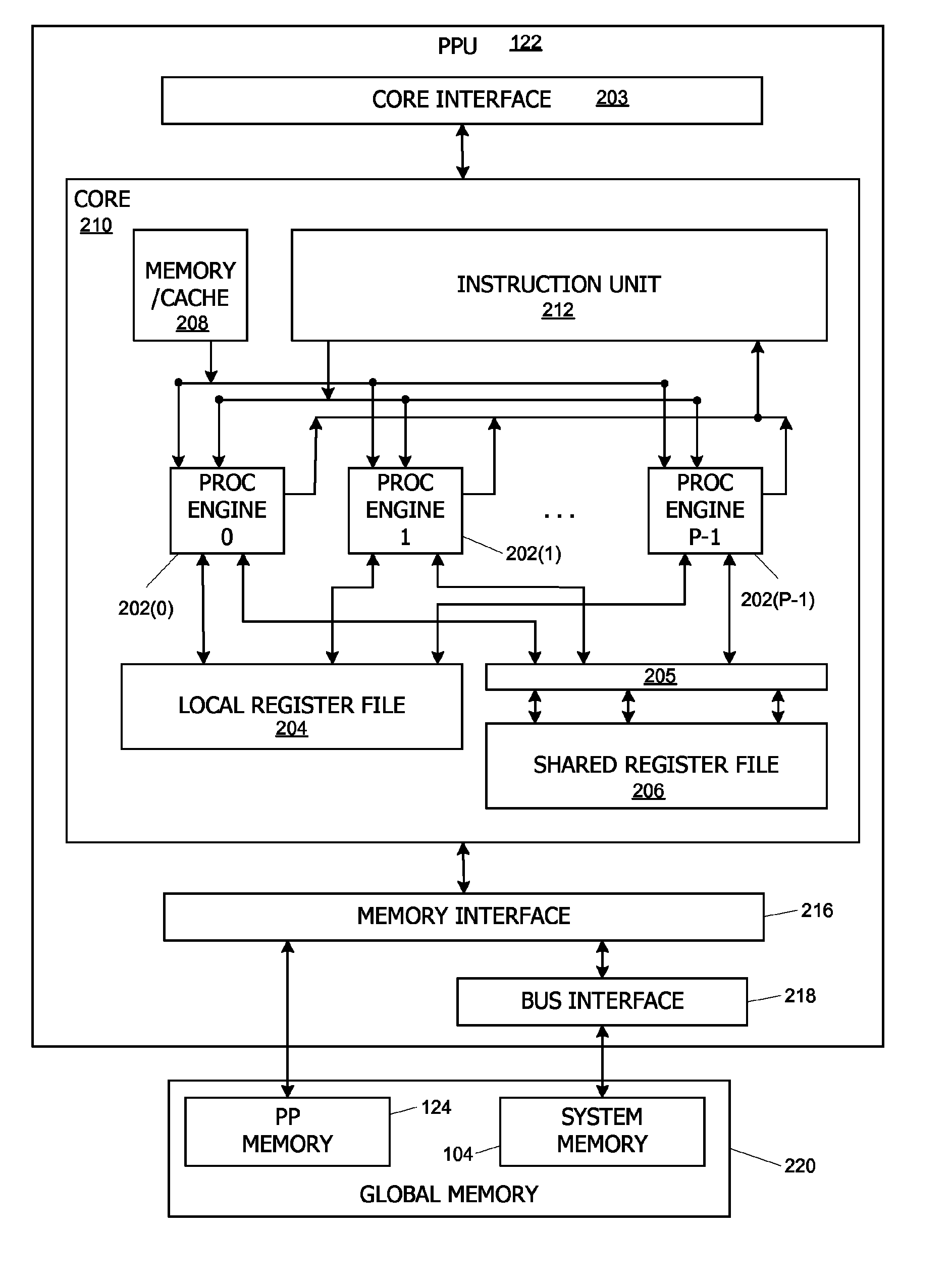Fast fourier transforms and related transforms using cooperative thread arrays
a technology of cooperative thread arrays and transforms, applied in the field of fast fourier transforms and related transform computations, can solve the problems of limiting the processor's ability to perform other operations, limiting the processing power of systems configured to operate in real time, and reducing latency
- Summary
- Abstract
- Description
- Claims
- Application Information
AI Technical Summary
Benefits of technology
Problems solved by technology
Method used
Image
Examples
Embodiment Construction
[0028]Embodiments of the present invention provide techniques for performing a Fast Fourier Transform (FFT) or other transform reducible to butterfly computations on an input data set having a number N of points using arrays of concurrent threads that are capable of sharing data with each other. In one embodiment, each thread of a thread array reads two or more of the N points, performs an appropriate “butterfly” calculation to generate two or more new points, then stores the new points in a memory location that is accessible to other threads of the array. Each thread determines which points it is to read based at least in part on a unique thread identifier assigned to each thread. In some embodiments, a thread array can perform additional levels (or stages) of the transform; at each level, a thread may read data that was written in a previous stage by a different thread. In some embodiments, results from various transform levels are stored in local memory that the threads can acces...
PUM
 Login to View More
Login to View More Abstract
Description
Claims
Application Information
 Login to View More
Login to View More - R&D
- Intellectual Property
- Life Sciences
- Materials
- Tech Scout
- Unparalleled Data Quality
- Higher Quality Content
- 60% Fewer Hallucinations
Browse by: Latest US Patents, China's latest patents, Technical Efficacy Thesaurus, Application Domain, Technology Topic, Popular Technical Reports.
© 2025 PatSnap. All rights reserved.Legal|Privacy policy|Modern Slavery Act Transparency Statement|Sitemap|About US| Contact US: help@patsnap.com



